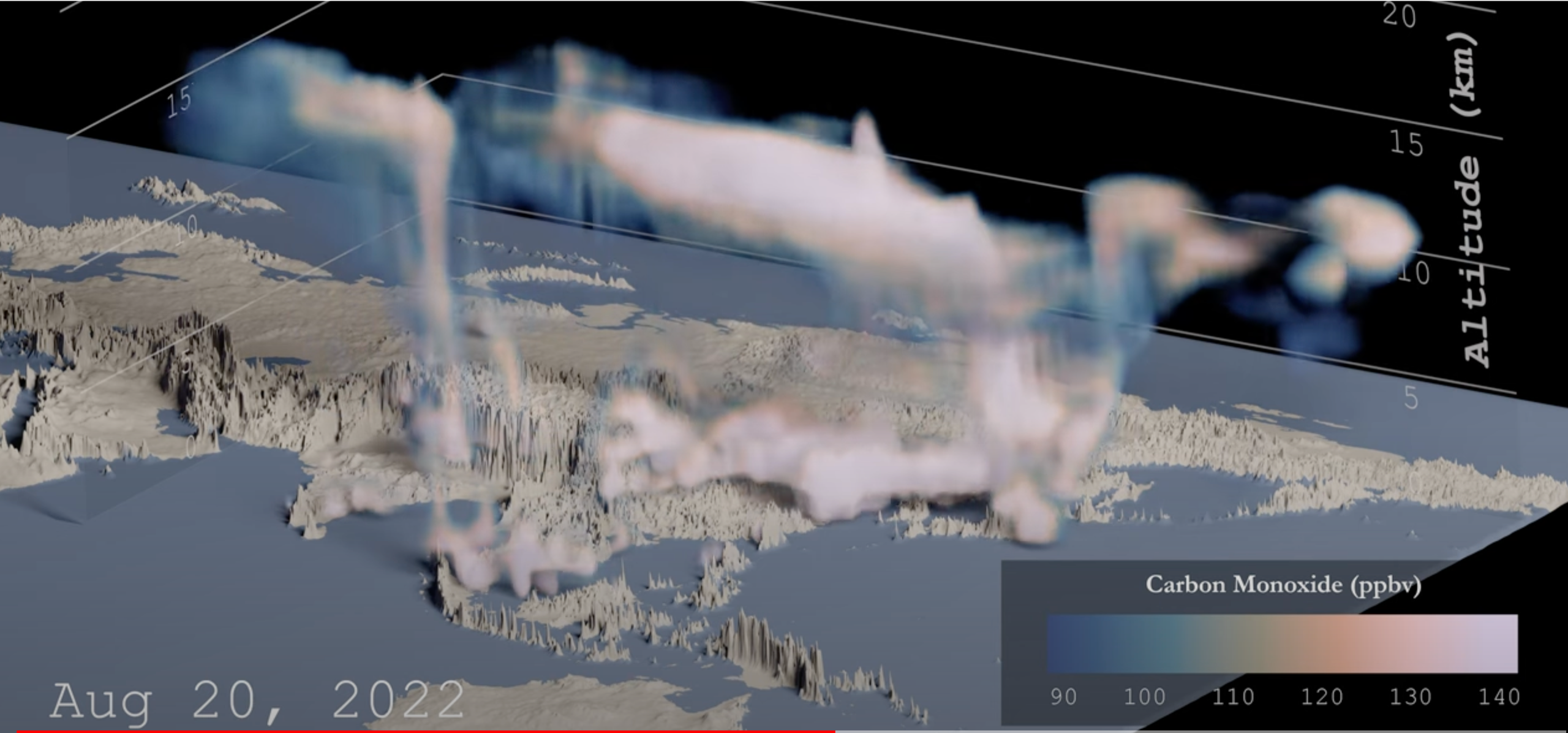Asian monsoon lofts ozone-depleting substances to stratosphere
Airborne observations discover new link between pollution and climate
Apr 23, 2024 - by David Hosansky
Apr 23, 2024 - by David Hosansky

Powerful monsoon winds, strengthened by a warming climate, are lofting unexpectedly large quantities of ozone-depleting substances high into the atmosphere over East Asia, new research shows.
The study, led by the U.S. National Science Foundation National Center for Atmospheric Research (NSF NCAR) and NASA, found that the East Asian Monsoon delivers more than twice the concentration of very short-lived ozone-depleting substances into the upper troposphere and lower stratosphere than previously reported.
The research team drew on airborne observations taken during a major 2022 Asian field campaign: the Asian Summer Monsoon Chemistry and Climate Impact Project (ACCLIP). The findings raise questions about the pace of the recovery of the ozone layer, which shields Earth from the Sun’s harmful ultraviolet radiation.
“It was a real surprise to fly through a plume with all those very short-lived ozone-depleting substances,” said NSF NCAR scientist Laura Pan, the lead author of the study. “These chemicals may have a significant impact on what will happen with the ozone layer, and it’s critical to quantify them.”
The study was published in the Proceedings of the National Academy of Sciences. It was funded by NSF, NASA, and NOAA, and co-authored by a large team of international scientists.
For thousands of years, people have viewed the Asian summer monsoon as important because of its impacts on local communities. Recently, however, scientists analyzing satellite observations have begun discovering that monsoon storms and winds play an additional role: carrying pollutants high in the atmosphere, where they can influence the world’s climate system.
ACCLIP investigated the chemical content of air that was borne by the two primary monsoons in the region — the South and the East Asian Monsoon — from Earth’s surface to as high up as the stratosphere. Once at that altitude, the chemicals can have far-reaching climate impacts because air in the stratosphere spreads out globally and remains for months to years, unlike the lower atmosphere where air masses turn over weekly.
The ACCLIP observations revealed that the East Asian Monsoon delivered higher levels of pollutants to the upper atmosphere than the South Asian Monsoon during 2022. The scientists measured carbon monoxide levels of up to 320 parts per billion — a remarkably high level to be found at an altitude of 15 kilometers (about 9 miles). Carbon monoxide is often a sign of industrial pollution, and the measurements indicated that the East Asian Monsoon was closely aligned with emissions of pollutants at the surface.
Pan, Elliot Atlas of the University of Miami, and their co-authors looked into a class of chemicals known as very short-lived organic chlorine compounds, which can destroy ozone but persist only for a relatively short time in the atmosphere (months to years). In contrast, ozone-depleting chlorofluorocarbons (CFCs) remain in the atmosphere for decades to centuries or more and are therefore viewed as a far more significant threat to the ozone layer.
For that reason, the landmark 1987 Montreal Protocol on Substances that Deplete the Ozone Layer focused on phasing out CFCs and other long-lived substances. The international treaty and subsequent revisions have enabled stratospheric ozone to begin recovering. A 2022 United Nations assessment concluded that the ozone layer, including an ozone hole over the Antarctic, will be largely restored over the next several decades.
The Montreal Protocol, however, did not limit the continued manufacture and use of very short-lived ozone-depleting substances. Emissions of these chemicals have soared in South and East Asia, including highly industrialized regions of East China.
In an unfortunate coincidence, those regions lie directly under the East Asian Monsoon, which, of the world’s eight regional monsoons, is the one that is predicted to strengthen the most with global warming.
The combination of the monsoon’s powerful updrafts occurring in the same region as the increasing emissions of short-lived chlorine compounds has resulted in the unexpectedly high quantity of the chemicals being swept into the stratosphere.
The analysis of the aircraft measurements by Pan and her co-authors revealed high levels of five short-lived chlorine compounds: dichloromethane (CH2Cl2), chloroform (CHCl3), 1,2-dichloroethane (C2H4Cl2), tetrachloroethene (C2Cl4), and 1,2-dichloropropane (C3H6Cl2).
Pan said more research is needed to analyze the potential implications for ozone recovery. The paper also notes that scientists will need to incorporate the new findings into climate models, as stratospheric ozone has complex effects on Earth’s temperature.
“These new observations are important for identifying that the East Asian Monsoon is a significant pathway for large amounts of pollution to rise from the surface to the stratosphere,” Pan said. “Though we expected to observe pollutant impact in the region, the amount of very short-lived ozone-depleting substances we actually observed certainly came as quite a surprise. The potential impacts of the high levels of these chemicals will need to be taken into consideration for projections of both the recovery of stratospheric ozone as well as climate change.”